Mi-T-M HSE Series Le manuel du propriétaire
- Catégorie
- Nettoyeurs haute pression
- Taper
- Le manuel du propriétaire

Operator's Manual 1
©Copyright 2013, Mi-T-M Corporation
®
#37-1239-E/F/S-080218
CAUTION
RISK OF INJURY!
READ MANUAL BEFORE OPERATING!
This manual is an important part of the pressure washer and must
remain with the unit when you sell or rent it!
OPERATOR’S MANUAL FOR
HSE-SERIES
HOT WATER
PRESSURE WASHERS
®
C US
201473

2 Operator's Manual
TABLE OF CONTENTS
INTRODUCTION ................................................................................................... 3
IMPORTANT SAFETY WARNINGS ...................................................................4-7
RISK OF ELECTRIC SHOCK OR ELECTROCUTION ................................... 4
RISK OF EXPLOSION OR FIRE ....................................................................5
RISK OF ASPHYXIATION ...................................................................................5
RISK OF INJECTION OR SEVERE CUTTING INJURY .................................6
RISK OF BURNS ............................................................................................6
RISK OF BURSTING ......................................................................................6
RISK FROM MOVING PARTS ........................................................................ 6
RISK OF BODILY INJURY .............................................................................. 7
FEATURES ......................................................................................................8-13
HSE-SMALL FRAME WITH FLOAT TANK ...................................................8-9
HSE-SMALL FRAME WITH DIRECT FEED ............................................10-11
HSE-LARGE FRAME ............................................................................... 12-13
INSTALLATION & PREPARATION................................................................14-17
ATTIRE ..........................................................................................................14
SETUP ..........................................................................................................14
POWER CORD CONNECTION ............................................................... 14-15
BURNER FUEL TANK ...................................................................................15
ADJUSTABLE PRESSURE DUAL LANCE ................................................... 16
DUAL LANCE CONNECTION ......................................................................16
WATER SUPPLY ...........................................................................................16
UNLOADER ..................................................................................................17
THERMAL RELIEF VALVE ...........................................................................17
PRE-START INSPECTION PROCEDURES .................................................17
NOTES ................................................................................................................18
OPERATING INSTRUCTIONS ......................................................................20-22
FLUSHING THE SYSTEM ............................................................................20
START-UP/COLD WATER OPERATION ...................................................... 20
HOT WATER OPERATION ........................................................................... 21
STEAM OPERATION ....................................................................................21
CLEANING WITH DETERGENTS ................................................................ 21
SHUTDOWN ................................................................................................. 22
STORAGE & MAINTENANCE ....................................................................... 22-24
SPECIFIC MAINTENANCE .........................................................................22
WINTERIZING .........................................................................................23-25
TROUBLESHOOTING .............................................................................25-27
MAINTENANCE CHART ....................................................................................28
OPTIONS ............................................................................................................29
ACCESSORIES ..................................................................................................30
STATEMENT OF WARRANTY ...........................................................................31
WARNING: This product can expose you to
chemicals including Lead, which is known to
the State of California to cause cancer and birth
defects or other reproductive harm. For more
information go to www.P65Warnings.ca.gov
WARNING
WARNING: This product can expose you to
chemicals including carbon monoxide, which is
known to the State of California to cause birth
defects or other reproductive harm. For more
information go to www.P65Warnings.ca.gov
WARNING

Operator's Manual 3
INTRODUCTION
Congratulations on the purchase of your new Mi-T-M HSE-Series hot water pressure washer! You can be assured your
hot water pressure washer was constructed and designed with quality and performance in mind. Each component has
been rigorously tested to ensure the highest level of acceptance.
This operator’s manual was compiled for your benet. By reading and following the simple safety, installation, operation,
maintenance and troubleshooting steps described in this manual, you will receive years of trouble free operation from
your new Mi-T-M HSE-Series hot water pressure washer. The contents of this manual are based on the latest product
information available at the time of publication. Mi-T-M reserves the right to make changes in price, color, materials,
equipment, specications or models at any time without notice.
! IMPORTANT !
These paragraphs are surrounded by a "SAFETY ALERT BOX". This box is used to designate
and emphasize Safety Warnings that must be followed when operating this pressure washer.
Accompanying the Safety Warnings are "signal words" which designate the degree or level
of hazard seriousness. The "signal words" used in this manual are as follows:
DANGER: Indicates an imminently hazardous situation which, if not avoided, WILL
result in death or serious injury.
WARNING: Indicates a potentially hazardous situation which, if not avoided, COULD
result in death or serious injury.
CAUTION: Indicates a potentially hazardous situation which, if not avoided MAY
result in minor or moderate injury.
The symbols set to the left of this paragraph are "Safety Alert Symbols". These symbols
are used to call attention to items or procedures that could be dangerous to you or other
persons using this equipment.
ALWAYS PROVIDE A COPY OF THIS MANUAL TO ANYONE USING THIS EQUIPMENT. READ
ALL INSTRUCTIONS BEFORE OPERATING THIS PRESSURE WASHER AND ESPECIALLY
POINT OUT THE "SAFETY WARNINGS" TO PREVENT THE POSSIBILITY OF PERSONAL
INJURY TO THE OPERATOR.
Once the unit has been removed from the box, immediately write in the serial number of your unit in the space
provided below.
SERIAL NUMBER_________________________________
Inspect for signs of obvious or concealed freight damage. If damage does exist, le a claim with the transportation
company immediately. Be sure that all damaged parts are replaced an that the mechanical and electrical problems
are corrected prior to operation of the unit. If you require service, contact Mi-T-M Customer Service.
CUSTOMER SERVICE
CALL OUR TOLL-FREE NUMBER
for the Sales or Service Center nearest you!
800-553-9053
Please have the following information available for all service calls:
1. Model Number
2. Serial Number
3. Date and Place of Purchase

4 Operator's Manual
POTENTIAL CONSEQUENCE
PREVENTION
SAFETY WARNINGS
WARNING: When using this product, basic precautions should always be observed, including the following.
READ ALL SAFETY WARNINGS BEFORE USING PRESSURE WASHER
HAZARD
RISK OF
ELECTRIC SHOCK
OR ELECTROCUTION
Serious injury or death could oc-
cur if the pressure washer is not
properly grounded. Your pressure
washer is powered by electricity
and may cause electric shock or
electrocution if not used properly.
Electrical shock may occur from
electrical cord.
Electrical shock may occur if
pressure washer is not operated
properly.
Serious injury or death may occur if
electrical repairs are attempted by
unqualied persons.
This product must be grounded. Make
sure the pressure washer is equipped with
a GFCI built into the power supply cord. If
this is not available, the pressure washer
must be plugged into a receptacle that is
protected by a GFCI. Disconnect when not
in use.
If your unit is equipped with a GFCI, DO
NOT drop the GFCI as damage could
result. If the GFCI is accidentally dropped,
be certain to test the GFCI before using
to ensure it is working properly. (Follow
instructions on GFCI for test procedures.)
Always be certain the unit is receiving
proper voltage. Before plugging the unit
into a compatible power source, be certain
the switch is in the “OFF” position. Discon-
nect when not in use.
Do not modify plug provided with the prod-
uct. If it will not t the outlet, have a proper
outlet installed by a qualied electrician. Do
not use any type of adapter.
Check power cord for signs of crushing,
cutting or heat damage. If replacement of
plug or cord is needed, use only identical
replacement parts.
Do not use extension cords with this pres-
sure washer.
Keep all connections dry and off the
ground. Do not allow electrical cords to lay
in water or in such a position where water
could come in contact with them. Do not
touch plug with wet hands.
Do not pull on the electrical cord to discon-
nect from the outlet.
Do not direct spray on or into electrical
installations of any kind! This includes
electrical outlets, light bulbs, fuse boxes,
transformers, the unit itself, etc.
Do not allow metal components of the pres-
sure washer to come in contact with live
electrical components.
Never operate the pressure washer with
safety guards/covers removed or damaged.
Any electrical wiring or repairs performed
on this pressure washer should be done
by Authorized Service Personnel in ac-
cordance with National and Local electrical
codes.
Before opening any electrical enclosure,
always shut off the pressure washer, relieve
pressure and unplug the pressure washer
from the power source. Allow the pressure
washer to cool down. Never assume the
pressure washer is safe to work on just be-
cause it is not operating. It could restart at
any time! Service in a clean, dry, at area.

Operator's Manual 5
POTENTIAL CONSEQUENCE
PREVENTION
SAFETY WARNINGS
WARNING: When using this product, basic precautions should always be observed, including the following.
READ ALL SAFETY WARNINGS BEFORE USING PRESSURE WASHER
RISK OF
EXPLOSION OR FIRE
Serious injury or death may occur
from normal sparks in the multiple
ignition sources or burner exhaust.
Serious injury or death may occur as
a result of improper fueling.
Serious injury or death may occur
if system safety’s are not properly
maintained.
Serious injury or death may occur
from inhaling burner exhaust or
dangerous vapors.
Always operate pressure washer in a well
ventilated area free of ammable vapors,
combustible dust, gases or other combustible
materials.
Do not store the pressure washer near an
open ame or any equipment such as a stove,
furnace, water heater, etc., which utilizes a pilot
light or sparking device.
Do not use this pressure washer to spray
ammable material!
Do not smoke while lling burner fuel tank.
Never ll the burner fuel tank while the pressure
washer is running or hot. Allow to cool two
minutes before refueling.
Do not refuel indoors or in a poorly ventilated
area.
Always refuel slowly to avoid the possibility of
spilled fuel which may cause a risk of re.
Burner Fuel Tank:
Use No. 1 or No. 2 fuel oil/diesel or kerosene.
Do not use gasoline, crankcase drainings or
oil containing gasoline or solvents.
Do not operate the unit if diesel fuel is spilled.
Wipe the pressure washer clean and move it
away from the spill. Avoid creating any ignition
until the diesel fuel has evaporated.
This pressure washer has a Safety Relief
device which should never be altered, modied,
removed or made inoperative. If the device
fails, replace immediately with only genuine
manufacturer replacement part.
Never operate this pressure washer in an
enclosed area. Always make certain there
is adequate ventilation (fresh outside air) for
breathing and combustion. This will prevent
the buildup of dangerous carbon monoxide
gases. Beware of poorly ventilated areas, or
areas with exhaust fans which can cause poor
air exchange.
Follow all safety instructions provided with the
materials you are spraying. Use of a respirator
may be required when working with some
materials. Do not use this pressure washer
to dispense hazardous detergents.
HAZARD
RISK OF
ASPHYXIATION

6 Operator's Manual
POTENTIAL CONSEQUENCE
PREVENTION
SAFETY WARNINGS
READ ALL SAFETY WARNINGS BEFORE USING PRESSURE WASHER
RISK OF INJECTION OR
SEVERE CUTTING INJURY
Serious injury or death could occur
from high pressure spray penetrating
the skin.
Keep clear of nozzle and spray! Never put your
hand, ngers or body directly over the spray
nozzle.
Do not direct discharge stream at persons or self.
This product is to be used only by trained operators.
Always keep operating area clear of all persons.
Close supervision is necessary when used near
children. DO NOT allow children to operate this
unit!
SEEK EMERGENCY MEDICAL CARE if the spray
appears to have penetrated the skin! DO NOT
TREAT AS A SIMPLE CUT!!
High pressure hoses and fuel lines should be
inspected daily for signs of wear. If evidence of
failure exists, promptly replace all suspect hoses
and fuel lines to prevent the possibility of injury
from the high pressure spray. If a hose or tting is
leaking, NEVER PLACE YOUR HAND DIRECTLY
ON THE LEAK.
NEVER operate the gun with the trigger wired in the
open position. To prevent accidental discharge,
the trigger gun should be securely locked when
not in use.
Before removing the spray nozzle or servicing
the unit, ALWAYS shut off the unit and trigger the
gun to release trapped pressure. (Even after you
shut off the unit, there is high pressure water left
in the pump, hose and gun until you release it by
triggering the gun.)
HAZARD
RISK OF BURNS Serious injury may occur from
touching the heat exchanger. This
area can remain hot for some
time after the pressure washer is
shutdown.
Serious injury may occur from a
pressure washer malfunction or
exploding accessories if incorrect
system components, attachments
or accessories are used.
Serious injury or death may occur
if attempting to start the pressure
washer when the pumping system
is frozen.
Never make adjustments to the factory set
pressures.
Never exceed manufacturers maximum allowable
pressure rating of attachments.
Do not allow any hoses to make contact with heat
exchanger to prevent the possibility of bursting.
Avoid dragging the hoses over abrasive surfaces
such as cement.
Use only manufacturer recommended repair parts
for your pressure washer.
In freezing temperatures, the unit must always be
warm enough to ensure there is no ice formation
in the pump. Do not start the pressure washer if it
has been transported in an open or underheated
vehicle without rst allowing the pump to thaw.
RISK OF BURSTING
Never make adjustments to the unit while it is
connected to the power source.
Do not operate the unit without all protective
covers in place.
Follow the maintenance instructions specied in
the manual.
Never allow any part of your body to contact the
heat exchanger.
Do not leave unit unattended after shutdown until
it is completely cooled down as described in the
“SHUTDOWN” procedures listed on page 20 of
this manual.
RISK FROM MOVING PARTS
Serious injury may occur to the
operator from moving parts on the
pressure washer.

Operator's Manual 7
RISK OF BODILY INJURY
SAFETY WARNINGS
READ ALL SAFETY WARNINGS BEFORE USING PRESSURE WASHER
Serious injury or death may occur
from detergents contacting the
skin.
Serious injury can occur from loose
debris being propelled at a high speed
from the spray gun.
Injury may occur if the operator loses
his balance caused by the thrust of
water traveling through the spray
nozzle.
Injury may occur from the pressure
washer.
SEEK EMERGENCY MEDICAL CARE if you are
using cleaning agents and the spray appears to
have penetrated the skin! DO NOT TREAT AS
A SIMPLE CUT! Be prepared to tell a physician
exactly what kind of detergents you were using by
reading the Material Safety Data Sheet (MSDS)
provided with your detergent.
Never use any solvents or highly corrosive
detergents or acid type cleaners with this pressure
washer.
Protective equipment such as rubber suits, gloves
and respirators are advisable, especially when
using cleaning detergents.
Keep all detergents out of the reach of
children!
ALWAYS wear protective goggles when operating
the unit to shield the eyes from ying debris and
detergents.
DO NOT direct spray toward fragile materials
such as glass for shattering could occur.
If the pressure washer is equipped with an Auto
start/stop feature, the unit will shutdown until
the gun is triggered. To prevent accidental high
pressure discharge, do not leave unit unattended
while in this mode.
Stay alert-watch what you are doing. Do not
operate the unit when fatigued or under the
inuence of alcohol or drugs.
NEVER squeeze the trigger unless securely
braced.
DO NOT overreach or stand on unstable support.
Keep good footing and balance at all times.
Wet surfaces can be slippery, wear protective
foot gear and keep good footing and balance
at all times.
NEVER trigger the gun while on a ladder or
roof.
ALWAYS hold on rmly to the gun/lance assembly
when starting and operating the unit. Failure
to do so can cause the lance to fall and whip
dangerously.
Know how to stop the pressure washer and
bleed pressures quickly. Be thoroughly familiar
with controls.
DO NOT leave pressurized unit unattended. Shut
off the pressure washer and release trapped
pressure before leaving.
DO NOT operate the unit if you see any fuel, oil or
water leaks from the machine. DO NOT resume
operation until the unit has been inspected and
repaired by a qualied service person.
Place unit in a clean, dry, at area for servicing.
Before servicing the unit: turn the unit off, relieve
the water pressure from the trigger gun, and allow
the unit to cool down. Service in clean, dry, at
area. If applicable, block wheels to prevent unit
from moving.
Do not move the unit by pulling on the hose.
POTENTIAL CONSEQUENCE
PREVENTION
!SAVE THESE INSTRUCTIONS!
HAZARD

8 Operator's Manual
HSE-SMALL FRAME WITH FLOAT TANK FEATURES
HSE SMALL FEATURES _WITH FLOAT TANK 022713

Operator's Manual 9
FEATURES LISTING
1. Center Balanced Lifting Eye
2. TEFC Pump Motor
3. Wand Holder
4. Protective Rollcage
5. Burner Fuel Tank
6. High Pressure Pump w/Unloader
7. Flat Free Wheels
8. Fuel Filter/Water Separator
9. Electric Cord w/GFCI
10. Water Float Tank
11. Detergent Metering Valve
12. Spray Nozzle Holder
13. Water Inlet
14. Switch-On/Off/Burner
15. Burner Air Regulation
16. Brake
17. High Pressure Hose
18. Trigger Safety Lock
19. Trigger Gun
20 Insulated Lance
21. Adjustable Pressure Dual Lance
22. Spray Nozzle

10 Operator's Manual
HSE-SMALL FRAME WITH DIRECT FEED FEATURES
HSE SMALL FEATURES _WITH DIRECT FEED 022713

Operator's Manual 11
FEATURES LISTING
1. Center Balanced Lifting Eye
2. TEFC Pump Motor
3. Wand Holder
4. Protective Rollcage
5. Burner Fuel Tank
6. High Pressure Pump w/Unloader
7. Flat Free Wheels
8. Fuel Filter/Water Separator
9. Electric Cord w/GFCI
10. Spray Nozzle Holder
11. Switch-On/Off/Burner
12. Burner Air Regulation
13. Brake
14. High Pressure Hose
15. Trigger Safety Lock
16. Trigger Gun
17 Insulated Lance
18. Adjustable Pressure Dual Lance
19. Spray Nozzle

12 Operator's Manual
0MHSE015-032905-RZ
HSE-LARGE FRAME FEATURES

Operator's Manual 13
FEATURES LISTING
1. Decal- Warning: Risk of Explosion
2. Coil Drain
3. High Pressure Outlet
4. Data Plate
5. Burner Air Regulation
6. Brake
7. Burner Fuel Tank
8. Flat Free Wheels
9. Pressure Switch
10. High Pressure Hose w/Unloader
11. TEFC Pump Motor
12. Water Float Tank
13. Water Strainer w/Bowl
14. Water Inlet
15. Heat Exchanger Exhaust
16. Decal- Warning: Hot
17. Center Balance Lift Eye
18. Convient Push/Pull Handle
19. Detergent Metering Valve
20. Decal- Caution: Risk of Fire
21. Decal- Hang Tag
22. Electric Cord w/GFCI
23. Beltguard
24. Decal- Warning: Beltguard in Place
25. Wand Holder
26. Decal- Warning: Electric
27. High Pressure Hose
28. Trigger Safety Lock
29. Trigger Gun
30. Insulated Lance
31. Adjustable Pressure Dual Lance
32. Nozzle
33. Switch (On/Off/Burner)
34. Decal- Warning/Caution/Operation
35. Control Panel
36. Protective Roll Cage
37. Protective Cover Assembly

14 Operator's Manual
INSTALLATION & PREPARATION
ATTIRE:
Proper attire is essential to your safety. It is advised to utilize whatever means
necessary to protect eyes, ears, and skin. Additional safety attire (such as
respiratory mask) may be required when using detergent cleaning agents with
this washer.
WARNING
RISK OF ASPHYXIATION!
DO NOT OPERATE IN AN
ENCLOSED AREA. USE THIS
PRODUCT ONLY IN WELL
VENTILATED AREAS!
THE EXHAUST CONTAINS
CARBON MONOXIDE, A
POISONOUS, ODORLESS AND
INVISIBLE GAS. BREATHING
THIS GAS CAN CAUSE SERIOUS
INJURY, ILLNESS & POSSIBLE
DEATH.
DANGER
RISK OF EXPLOSION OR FIRE!
DO NOT PLACE UNIT IN AN
AREA WHERE FLAMMABLE
GAS VAPORS MAY BE PRESENT.
A SPARK COULD CAUSE AN
EXPLOSION OR FIRE!
RISK OF UNIT BURSTING!
DO NOT STORE/OPERATE UNIT
IN FREEZING ENVIRONMENTS!
POWER CORD CONNECTION:
1. Make certain the motor switch is in the “OFF” position.
2. Ensure electrical supply is identical to the specications listed on the pressure
washer data plate.
3. GROUNDING INSTRUCTIONS: This product must be grounded. If it should
malfunction or breakdown, grounding provides a path of least resistance for
electric current to reduce the risk of electric shock. This product is equipped
with a cord having an equipment-grounding conductor and a grounding plug.
The plug must be plugged into an appropriate outlet that is properly installed
and grounded in accordance with all local codes and ordinances.
4. DANGER: Improper connection of the equipment-grounding conductor can
result in a risk of electrocution. Check with a qualied electrician or service
personnel if you are in doubt as to whether the outlet is properly grounded.
Do not modify the plug provided with the product - if it will not t the outlet,
have a proper outlet installed by a qualied electrician. Do not use any type
of adaptor with this product.
5. GROUND FAULT CIRCUIT INTERRUPTER PROTECTION:
a. SINGLE PHASE: If this pressure washer is provided with a Ground
Fault Circuit Interrupter (GFCI) built into the plug or the power supply
cord, test the GFCI each time it is plugged into an outlet according to
instructions on the GFCI. DO NOT use the pressure washer if the test
fails! The GFCI provides additional protection from the risk of electric
shock. Should replacement of the plug or cord become necessary, use
only identical replacement parts that include GFCI protection.
SET-UP:
1. This unit should only be placed on a level surface to ensure proper lubrication
for the water pump while operating. NEVER spray water directly on the
unit.
2. Do not use unit in an area:
a. with insufcient ventilation.
b. where there is evidence of oil or fuel leaks.
c. where ammable gas vapors may be present.
3. Engage brake to prevent the unit from moving while operating.
4. Do not allow the unit to be exposed to rain, snow or freezing temperatures.
If any part of the unit becomes frozen, excessive pressure may build up in
the unit which could cause it to burst resulting in possible serious injury to
the operator or bystanders.
5. Pump oil level should be checked before each use. Make certain the oil is
on the “Full” mark on the dipstick or in the center of the oil sight glass. If
the level appears to be low, ll with Mi-T-M pump oil #AW-4085-0016.
DANGER
RISK OF ELECTROCUTION!
THIS UNIT MUST BE CONNECTED
TO A PROPERLY GROUNDED
OUTLET. DO NOT USE AN
ADAPTER OR REMOVE THE
THIRD GROUNDING PRONG.

Operator's Manual 15
POWER CORD CONNECTION CONT’D.:
5. b. SINGLE PHASE: If this pressure washer is not provided with a
GFCI, this pressure washer should only be connected to a
receptacle that is protected by a Ground Fault Circuit Interrupter
(GFCI) to comply with the National Electric Code (NFPA 70) and
to provide additional protection from the risk of electric shock.
c. THREE PHASE: These pressure washers are not provided
with GFCI protection.
6. EXTENSION CORDS: Mi-T-M DOES NOT RECOMMEND THE USE OF
EXTENSION CORDS! If use of an extension cord is unavoidable, it must
be plugged into a GFCI found in circuit boxes or protected receptacles.
When using an extension cord, consult a qualied electrician to determine
the proper wire gauge needed for the length of the extension cord.
SINGLE PHASE: Use only 3-wire extension cords that have 3-prong
grounding-type plugs and 3-pole cord connectors that accept the plug
from the product.
THREE PHASE: Use only 4 wire extension cords that have 4-prong
grounding type plugs and 4-pole cord connectors that accept the plug
from the product.
Use only extension cords that are intended for outdoor use. These
extension cords are identied by a marking “Acceptable for use with
outdoor appliances; store indoors while not in use.” Use only extension
cords having an electrical rating not less than the rating of the product.
Do not use damaged extension cords. Examine extension cord before
using and replace if damaged. Do not abuse extension cord and do not
yank on any cord to disconnect. Keep cord away from heat and sharp
edges. Always connect and disconnect the extension cord from the
receptacle before connecting and disconnecting the product from the
extension cord.
7. Ensure the area between the pressure washer cord and outlet is kept
dry.
8. Insert the male plug into a grounded AC outlet. DO NOT use an adapter
OR remove the grounding plug!!
INSTALLATION & PREPARATION
BURNER FUEL TANK:
1. Review “Risk of Explosion or Fire” pg. 5, before fueling.
2. Locate the Safety Decals on your unit and heed their warnings.
3. Fill the burner fuel tank with good quality, clean No. 1 or No. 2 fuel oil
diesel or kerosene. Do not use gasoline!
WARNING
RISK OF ELECTROCUTION!
TO REDUCE THE RISK OF
ELECTROCUTION, KEEP ALL
CONNECTIONS DRY AND OFF THE
GROUND. DO NOT TOUCH PLUG
WITH WET HANDS.
DANGER
RISK OF FIRE!
-DO NOT SMOKE WHILE FUELING!
-DO NOT FILL THE FUEL TANK WHILE
UNIT IS RUNNING OR HOT. ALLOW
UNIT TO COOL FOR TWO MINUTES
BEFORE RE-FUELING.
-DO NOT FILL FUEL TANK TO
POINT OF OVERFLOWING. ALLOW
APPROXIMATELY 1/4” OF TANK
SPACE FOR FUEL EXPANSION.
WARNING
RISK OF EXPLOSION OR FIRE!
ALWAYS STORE FUEL AWAY FROM
THE WASHER WHILE THE UNIT IS
RUNNING OR HOT.

16 Operator's Manual
INSTALLATION & PREPARATION
ADJUSTABLE PRESSURE DUAL LANCE:
This unit features an Adjustable Pressure Dual Lance which allows the user to
select a high or low pressure “fan” spray. Simply rotate the adjustable grip on
the dual lance to achieve the desired pressure selection.
1. Selection of high pressure can be achieved by turning the adjustable grip on
the Dual Lance assembly counterclockwise as shown in the gure below.
2. Selection of low pressure can be achieved by turning the adjustable grip on
the Dual Lance clockwise as shown in the gure below.
DUAL LANCE CONNECTION:
1. Be certain the trigger gun is locked in the “OFF” position.
2. Connect the dual lance assembly to the trigger gun assembly at this time
(if applicable). Be certain the connection is securely tightened.
WATER SUPPLY:
1. Select a water supply hose which is a quality grade of garden hose measuring
at least 3/4” ID and no longer than 50 feet.
2. If your unit is equipped with a water strainer, ensure it is clean and free of
any obstructions. Periodic cleaning of the water strainer will help prevent
pump problems. As a strainer becomes obstructed, it restricts proper ow of
water to the pump. This can result in cavitation which will cause premature
failure of pump packings.
a. Unscrew the strainer bowl from the unit.
b. Remove strainer screen and clean or replace.
3. Connect one end of the water supply hose to the water inlet of the unit.
Connect the other end of the hose to your pressurized water supply.
NOTE: If there is a high mineral content in your water, it is recommended that a
water softener be used to prevent the possibility of excessive scale buildup
inside the heat exchanger coil.
4. Follow the incoming water requirements listed below:
a. Water pressure must be between a minimum of 20 pounds per square
inch (PSI) and a maximum of 125 PSI.
b. Incoming GPM must be approximately one gallon more than the outgoing
GPM stated on the pressure washer nameplate. (You can check GPM by
timing how long it takes to ll a 5 gallon container.)
c. Incoming water temperature must not exceed 125°F. Excessive pump
damage may result if the water temperature exceeds this acceptable
level.
5. Never allow the unit to operate without the incoming water line attached and
the water supply completely turned on.
WARNING
RISK OF INJECTION CAUSING
SEVERE INJURY!
-THE TRIGGER GUN SHOULD
ALWAYS BE LOCKED IN THE OFF
POSITION WHEN NOT IN USE!
-NEVER LOOK DIRECTLY AT
THE NOZZLE UNLESS IT IS
DISCONNECTED FROM THE
TRIGGER GUN/DUAL LANCE
ASSEMBLY!

Operator's Manual 17
INSTALLATION & PREPARATION
UNLOADER:
Standard Models:
The unloader has been preset at the factory.
Steam Option Models:
The unloader has an adjustment knob which has a minimum/maximum setting.
Move the unloader clockwise to the maximum setting for Cold/Hot water
operation. Move counterclockwise to minimum setting for Steam operation.
THERMAL RELIEF VALVE:
To ensure the water temperature does not exceed acceptable levels, never
allow the pressure washer to operate in the bypass mode (with the unit
running and the trigger closed) for more than three minutes.
A thermal relief valve has been added to this unit to protect the pump. This
valve will open and release water if the water temperature in the pump has
exceeded 140° F. This will allow fresh, cool water to enter the system,
therefore preventing premature failure of pump packings.
PRE-START INSPECTION PROCEDURES:
Before starting the unit, perform the following procedures:
1. Inspect the electrical cords for cuts. If a cut is found, DO NOT TOUCH OR
USE CORD! Replace cord before starting unit.
2. Check the oil level in the pump.
3. Inspect the water inlet strainer. Clean or replace if necessary. See “Water
Supply”, #2, pg 14.
4. Check all hose connections to ensure they are securely tightened.
5. Inspect for system water leaks, oil leaks and fuel leaks. If a fuel leak is
found, DO NOT START UNIT! See “Risk of Explosion or Fire”, pg. 5. Be
sure that all damaged parts are replaced and that the mechanical problems
are corrected prior to operation of the unit. If you require service, contact
Customer Service.
6. Inspect high pressure hoses for kinking, cuts and leaks. If a cut or leak
is found, DO NOT USE HOSE! Replace hose before starting unit. See
“Risk of Injection or Severe Cutting Injury”, pg. 6. Be sure that all damaged
parts are replaced and that the mechanical problems are corrected prior to
operation of the unit. If you require service, contact Customer Service.
END OF PREPARATION INSTRUCTIONS

18 Operator's Manual
NOTES

Operator's Manual 19
WARNING
THE FOLLOWING PAGES CONTAIN OPERATING AND
MAINTENANCE INSTRUCTIONS.
DO NOT ATTEMPT TO OPERATE THIS PRESSURE
WASHER UNTIL YOU HAVE READ AND UNDERSTOOD
ALL SAFETY PRECAUTIONS AND INSTRUCTIONS
LISTED IN THIS MANUAL.
INCORRECT OPERATION OF THIS UNIT CAN CAUSE
SERIOUS INJURY!!
DO NOT ALTER OR MODIFY THIS EQUIPMENT
IN ANY MANNER!

20 Operator's Manual
OPERATING INSTRUCTIONS
FLUSHING THE SYSTEM:
This unit has a steel coil which, after setting, will cause the water remaining in
the coil from the previous usage to turn brown or black. This water must be
ushed from the system before start-up. This procedure should be performed
without the high pressure hose, gun and dual lance assembly installed.
DIRECT FEED MODELS:
1. Turn on the water supply.
2. Low pressure water will begin owing from the water outlet. This allows
the unit to ush any particles from the system. The unit is ushed when
the water is clear.
3. Once the system is ushed, turn off the water supply and connect the high
pressure hose to the water outlet of the unit.
4. Connect the trigger gun and dual lance assembly to the high
pressure hose.
5. Turn on the water supply.
FLOAT TANK MODELS:
1. Turn on the water supply.
2. Move the switch to the “Pump” position. Low pressure water will begin
owing from the water outlet. This allows the unit to ush any particles from
the system. The unit is ushed when the water is clear.
3. Once the system is ushed, move the switch to the “OFF” position and
connect the high pressure hose to the water outlet of the unit.
4. Connect the trigger gun and dual lance assembly to the high
pressure hose.
START-UP/COLD WATER OPERATION:
1. Refer to the “Safety Precautions” pgs. 4-7 before starting the unit.
2. Locate the Safety Decals on your unit and heed their warnings.
3. Ensure that the switch is in the “OFF” position.
4. Pointing the trigger gun in a safe direction, unlock the trigger gun and
squeeze the trigger. Brace yourself for possible gun kickback when the
pump starts.
5. Move the switch to the “Pump” position.
6. Once the unit has started, perform the following procedures with the gun
open:
a. Inspect for system water leaks, oil leaks and fuel leaks. If a fuel leak is
found, TURN UNIT OFF IMMEDIATELY! See “Risk of Explosion or
Fire”, pg. 5. Be sure that all damaged parts are replaced and that the
mechanical problems are corrected prior to operation of the unit. If you
require service, contact Customer Service.
b. Inspect high pressure hoses for kinking, cuts and leaks. If a cut or
leak is found, DO NOT TOUCH HOSE AT LEAK!!! TURN UNIT OFF
IMMEDIATELY! Replace hose before starting the unit. See “Risk of
Injection or Severe Cutting Injury” pg. 6. Be sure that all damaged
parts are replaced and that the mechanical problems are corrected
prior to operation of the unit. If you require service, contact Customer
Service.
7. At this point, the unit is operating as a cold water pressure washer. Trigger
the gun several times and try adjusting the water pressure by rotating the
grip on the dual lance. NEVER place hand or ngers in front of the nozzle
or look directly into the nozzle! High pressure water creates a risk of severe
injury!
8. Do not allow unit to operate in bypass mode (with trigger closed) for more
than three minutes without triggering the gun. Failure to follow this simple
rule can cause premature failure of pump packings.
NOTE: If this unit is equipped with an Auto Start/Stop feature, the pressure
washer will shutdown if the gun is not triggered after a designated amount
of time. The pressure washer will start again once the gun is triggered. The
Auto Start/Stop feature is preset at the factory for shutdown at 90 seconds.
It can be adjusted by an Authorized Service Technician to shutdown from no
usage after a minimum of 3 seconds to a maximum of 5 minutes.
9. Your pressure washer can deliver high pressure spray and a variety of spray
patterns using cold water. If you wish to use the Hot Water, Steam application
or Cleaning with Detergents, see page 19 for the correct procedures.
CAUTION
RISK OF UNIT DAMAGE.
BE CERTAIN THE HOSE, GUN
& DUAL LANCE ASSY. ARE
NOT CONNECTED TO THE
UNIT WHILE PRIMING THE
PUMP. PRIMING ALLOWS
MINERAL DEPOSITS TO BE
RELEASED FROM THE SYSTEM
WHICH WOULD OBSTRUCT
OR DAMAGE THE GUN AND
NOZZLE ASSEMBLY RESULTING
IN COSTLY REPAIRS.
WARNING
RISK OF INJECTION CAUSING
SEVERE INJURY!
-KEEP CLEAR OF NOZZLE!
NEVER PLACE HAND OR
FINGERS IN FRONT OF
NOZZLE!
-DO NOT DIRECT DISCHARGE
STREAM AT PEOPLE OR PETS!
-AUTO START/STOP FEATURE
WILL SHUTDOWN THE PRES-
SURE WASHER UNTIL GUN IS
TRIGGERED. TO PREVENT
ACCIDENTAL HIGH PRESSURE
DISCHARGE, DO NOT LEAVE
UNIT UNATTENDED WHILE IN
THIS MODE.
CAUTION
RISK OF DAMAGE.
DO NOT ALLOW SPRAY PATTERN
TO REMAIN ON A FIXED AREA
FOR AN EXTENDED PERIOD OF
TIME. POSSIBLE DAMAGE MAY
OCCUR TO THE AREA.
La page est en cours de chargement...
La page est en cours de chargement...
La page est en cours de chargement...
La page est en cours de chargement...
La page est en cours de chargement...
La page est en cours de chargement...
La page est en cours de chargement...
La page est en cours de chargement...
La page est en cours de chargement...
La page est en cours de chargement...
La page est en cours de chargement...
La page est en cours de chargement...
La page est en cours de chargement...
La page est en cours de chargement...
La page est en cours de chargement...
La page est en cours de chargement...
La page est en cours de chargement...
La page est en cours de chargement...
La page est en cours de chargement...
La page est en cours de chargement...
La page est en cours de chargement...
La page est en cours de chargement...
La page est en cours de chargement...
La page est en cours de chargement...
La page est en cours de chargement...
La page est en cours de chargement...
La page est en cours de chargement...
La page est en cours de chargement...
La page est en cours de chargement...
La page est en cours de chargement...
La page est en cours de chargement...
La page est en cours de chargement...
La page est en cours de chargement...
La page est en cours de chargement...
La page est en cours de chargement...
La page est en cours de chargement...
La page est en cours de chargement...
La page est en cours de chargement...
La page est en cours de chargement...
La page est en cours de chargement...
La page est en cours de chargement...
La page est en cours de chargement...
La page est en cours de chargement...
La page est en cours de chargement...
La page est en cours de chargement...
La page est en cours de chargement...
La page est en cours de chargement...
La page est en cours de chargement...
La page est en cours de chargement...
La page est en cours de chargement...
La page est en cours de chargement...
La page est en cours de chargement...
La page est en cours de chargement...
La page est en cours de chargement...
La page est en cours de chargement...
La page est en cours de chargement...
La page est en cours de chargement...
La page est en cours de chargement...
La page est en cours de chargement...
La page est en cours de chargement...
La page est en cours de chargement...
La page est en cours de chargement...
La page est en cours de chargement...
La page est en cours de chargement...
La page est en cours de chargement...
La page est en cours de chargement...
La page est en cours de chargement...
La page est en cours de chargement...
La page est en cours de chargement...
La page est en cours de chargement...
La page est en cours de chargement...
La page est en cours de chargement...
La page est en cours de chargement...
La page est en cours de chargement...
La page est en cours de chargement...
La page est en cours de chargement...
La page est en cours de chargement...
La page est en cours de chargement...
La page est en cours de chargement...
La page est en cours de chargement...
La page est en cours de chargement...
La page est en cours de chargement...
-
 1
1
-
 2
2
-
 3
3
-
 4
4
-
 5
5
-
 6
6
-
 7
7
-
 8
8
-
 9
9
-
 10
10
-
 11
11
-
 12
12
-
 13
13
-
 14
14
-
 15
15
-
 16
16
-
 17
17
-
 18
18
-
 19
19
-
 20
20
-
 21
21
-
 22
22
-
 23
23
-
 24
24
-
 25
25
-
 26
26
-
 27
27
-
 28
28
-
 29
29
-
 30
30
-
 31
31
-
 32
32
-
 33
33
-
 34
34
-
 35
35
-
 36
36
-
 37
37
-
 38
38
-
 39
39
-
 40
40
-
 41
41
-
 42
42
-
 43
43
-
 44
44
-
 45
45
-
 46
46
-
 47
47
-
 48
48
-
 49
49
-
 50
50
-
 51
51
-
 52
52
-
 53
53
-
 54
54
-
 55
55
-
 56
56
-
 57
57
-
 58
58
-
 59
59
-
 60
60
-
 61
61
-
 62
62
-
 63
63
-
 64
64
-
 65
65
-
 66
66
-
 67
67
-
 68
68
-
 69
69
-
 70
70
-
 71
71
-
 72
72
-
 73
73
-
 74
74
-
 75
75
-
 76
76
-
 77
77
-
 78
78
-
 79
79
-
 80
80
-
 81
81
-
 82
82
-
 83
83
-
 84
84
-
 85
85
-
 86
86
-
 87
87
-
 88
88
-
 89
89
-
 90
90
-
 91
91
-
 92
92
-
 93
93
-
 94
94
-
 95
95
-
 96
96
-
 97
97
-
 98
98
-
 99
99
-
 100
100
-
 101
101
-
 102
102
Mi-T-M HSE Series Le manuel du propriétaire
- Catégorie
- Nettoyeurs haute pression
- Taper
- Le manuel du propriétaire
dans d''autres langues
- English: Mi-T-M HSE Series Owner's manual
- español: Mi-T-M HSE Series El manual del propietario
Documents connexes
-
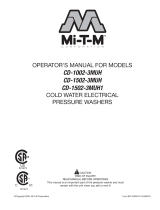 Mi-T-M CD Series Electric Le manuel du propriétaire
Mi-T-M CD Series Electric Le manuel du propriétaire
-
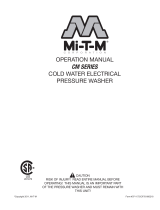 Mi-T-M CM Series Electric Le manuel du propriétaire
Mi-T-M CM Series Electric Le manuel du propriétaire
-
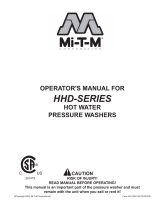 Mi-T-M HHD Series Le manuel du propriétaire
Mi-T-M HHD Series Le manuel du propriétaire
-
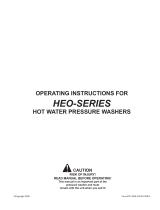 Mi-T-M HEO Series Le manuel du propriétaire
Mi-T-M HEO Series Le manuel du propriétaire
-
Mi-T-M HHB Series Le manuel du propriétaire
-
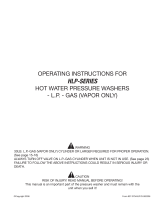 Mi-T-M HLP Series Le manuel du propriétaire
Mi-T-M HLP Series Le manuel du propriétaire
-
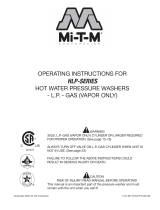 Mi-T-M HLP-SERIES Mode d'emploi
Mi-T-M HLP-SERIES Mode d'emploi
-
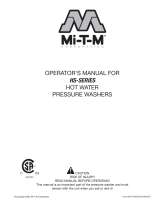 Mi-T-M HS Series Le manuel du propriétaire
Mi-T-M HS Series Le manuel du propriétaire
-
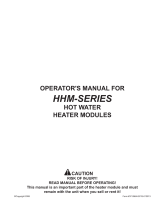 Mi-T-M HHM Series Heater Module Le manuel du propriétaire
Mi-T-M HHM Series Heater Module Le manuel du propriétaire
-
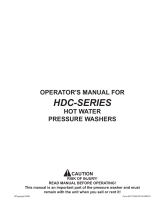 Mi-T-M HDC Series Le manuel du propriétaire
Mi-T-M HDC Series Le manuel du propriétaire

















































































































